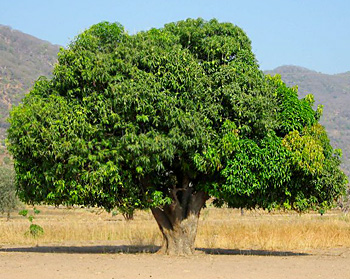 Culture of Mandla District is tribal in character. According to the census report, Gond tribe and Baiga tribe are most significant tribes in Mandla District. In comparison to the other tribes, Gonds are well settled and economically better than any other communities of the area. Gonds were earlier mostly forest-dwellers but are at present settled agriculturists. Gonds follow tribal endogamy and clan exogamy. Monogamous marriage is common among the Gonds but polygamy, is not altogether unknown. Cross-cousin marriage (both paternal and maternal) is preferred. Parallel cousin marriage has not been observed. They follow the system of patriarchy. Remarriage and widow marriage is also permitted. The Baigas are the most primitive and interesting forest tribal of Mandla district.
Culture of Mandla District is tribal in character. According to the census report, Gond tribe and Baiga tribe are most significant tribes in Mandla District. In comparison to the other tribes, Gonds are well settled and economically better than any other communities of the area. Gonds were earlier mostly forest-dwellers but are at present settled agriculturists. Gonds follow tribal endogamy and clan exogamy. Monogamous marriage is common among the Gonds but polygamy, is not altogether unknown. Cross-cousin marriage (both paternal and maternal) is preferred. Parallel cousin marriage has not been observed. They follow the system of patriarchy. Remarriage and widow marriage is also permitted. The Baigas are the most primitive and interesting forest tribal of Mandla district.
In the tribal societies of Mandla District, clans are usually named after some animals or plants. Among the common clans in different districts are Markam (Mango tree), Tekam (Indian Teak tree), Netam (the dog), Warkara (wild cat) and so on. From these animals and plants a clan derives its name. The worship of ancestors is an integral part of their religion. The Gonds have a highly developed aesthetic sense and celebrate a number of festivals. The influence of various leaders under different situations is also observed. Gonds have a tribal council to settle local disputes of internal nature such as conjugal infidelity and other social matters while they settle the extraneous matters in the presence of Mukadama i.e. the village headman.
Folk dance, folk songs and folk music play vital role in the cultural life of the tribal groups in Mandla District. It is through music and dance that they keep themselves occupied in the evenings. Folk music and dance give expression to their innermost feelings, their joys and sorrows, their natural affections and ideals, their appreciation of beauty of nature and war. Every season and every socio-religious ceremony has specific songs. On the occasions of their important religious festivals and marriages, they are found dancing and singing whole day and night.
Folk dances of the tribal communities are popularly called as `Karma`. Karma is the name of the plant commonly grown in that area. Before beginning the ceremonial dance a stem of the plant called `Karam Kalla` is buried in the ground and the dancing troupe dance around this plant. The festivals of Gonds are not so much associated with religion as is the case with most Hindu festivals. Their festivals are in response to the harvest season and local customs. In a whole, their festivals tend to be recreational rather than spiritual. Their festivals are also connected with agricultural cycle. Throughout the year, a number of fairs, festivals and feasts are organised in the village. However, their distribution over a year is rather irregular.
 Hareli Festival is the festival of rain. It is observed in the early period of rains. This is mostly celebrated in the month of July-August. Hareli word is probably derived from Hindi word, `Haryali` which means greenery as in this season vegetation begins to bloom and there is greenery all around. Khyania is another important festival of the region.
Hareli Festival is the festival of rain. It is observed in the early period of rains. This is mostly celebrated in the month of July-August. Hareli word is probably derived from Hindi word, `Haryali` which means greenery as in this season vegetation begins to bloom and there is greenery all around. Khyania is another important festival of the region.
Melamadai is a huge fair that is held after the completion of the harvesting of the paddy crop, when the people are free from their agricultural work and their stores are full with grain. After Diwali this fair is enjoyed daily for a week. The head of the village inaugurates the Mela.
Chait Gal festival starts from `Sharad Purnima` usually in October and continues up to the `Kartik Purnima` till November. Nawa Feast and Bidri (Bidri in India) ceremony are other popular celebrations of tribal communities of Mandla District.






